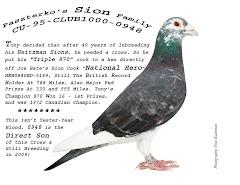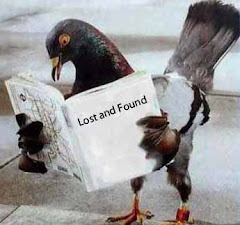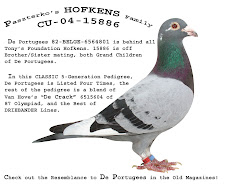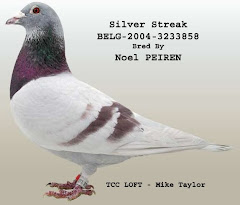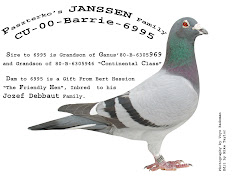Some indications of form are as follows: the eye sparkles and the eye sign or circle of adaptation or correlation or whatever you want to call it becomes more pronounced. The wattles become snow white and seem to extend further on to the bird's head. The feathers are tighter and shine, the skin is clear and a healthy color, not blue. There is no scale present on the skin, and, in fact, you can see the veins through the skin.
In the loft your widower will lie quietly in his next box resting on one wing with perhaps his tail trembling a little. Walking around the loft his tail will also tremble a bit and his movements are quick and alert. Out of doors he flies with the others but will break away from the others for short trips on his own. He may dive down to his loft only to take off again seconds later. He flies quietly and effortlessly excepting, of course, when he bangs his wings deliberately. He is full of life and can't stay still excepting when resting in his nest. Above all he is calm and becomes tamer that usual. He will fight you when you put your hand in his nest. In the basket he gets into a corner and minds his own business, the cock that coos and drives and fights in the basket is seldom one to put your money on, make notes of this you will see that I am right.
A pigeon in form has full elastic pectoral muscles. He seems to have no weight, he feels corky. Beware the heavy laden pigeon, he will waste your money. I don't say anything about size, good ones can be enormous pigeons or they can be tiny ones and form comes to them all, but I repeat, beware the heavy ones. No matter how big if they are well balanced and well built and in form they should feel as if they weighed nothing.
Other signs of form are clean feet with no scale, they are red and even feel warm, there is an oily spot at the end of the flight feathers and the keel has the well known blood bubble...
Taken from Widowhood Flying
by Mark Gordon







